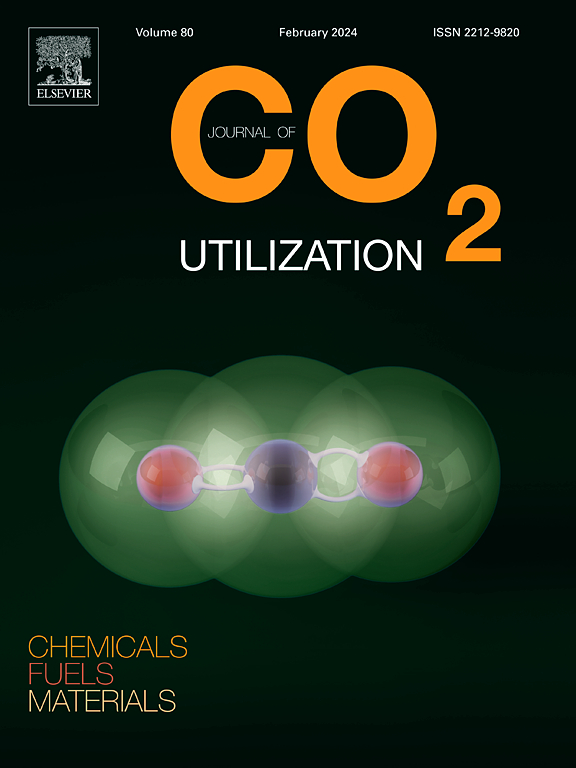Electrodeposited copper-cuprite layers modified with rGO for light-supported conversion of CO2 to methane and ethylene
IF 7.2
2区 工程技术
Q1 CHEMISTRY, MULTIDISCIPLINARY
引用次数: 0
Abstract
Cu-Cu2O-rGO composite layers were electrodeposited for the first time from alkaline copper(II) lactate-based electrolytes containing dispersed rGO flakes. The properties of electrodeposited composite materials are strongly affected by applied potentials. Obtained layers were investigated towards their catalytic activity in electro- and photoelectrochemical artificial CO2-based synthesis of hydrocarbons. The effect of applied potential on the morphology, crystallographic structure, band gap, and conduction and valence band location was investigated. The catalytic performance of the electrodeposited layers was analyzed in CO2-saturated KHCO3 electrolyte under the dark and at light illumination applying different conversion potentials. The stability of the obtained layers was analysed based on XPS and XAS results. Maximal Faradaic efficiencies for methane and ethylene formation were achieved in the presence of light and amounted to 10 and 9.91%, respectively. Reported results indicate that the presence of rGO in deposited layers significantly affects the band structure of electrodeposited layers. It was also observed that even slight modification of electrodeposition or conversion potential results in noticeable differences in Faradaic efficiency corresponding to hydrocarbons formation.
用还原氧化石墨烯修饰的电沉积铜-铜层用于光负载下二氧化碳转化为甲烷和乙烯
首次在含有分散还原氧化石墨烯薄片的碱性乳酸铜基电解质中电沉积cu - cu20 -还原氧化石墨烯复合层。电沉积复合材料的性能受外加电位的影响很大。研究了所得层在电化学和光电化学人工co2基合成碳氢化合物中的催化活性。研究了外加电位对形貌、晶体结构、带隙、导电带和价带位置的影响。在不同的转换电位下,分析了电沉积层在co2饱和的KHCO3电解液中在黑暗和光照下的催化性能。根据XPS和XAS结果分析了所得层的稳定性。有光条件下,甲烷和乙烯生成的法拉第效率最高,分别为10%和9.91%。研究结果表明,沉积层中氧化石墨烯的存在显著影响电沉积层的能带结构。还观察到,即使电沉积或转化电位的轻微改变,也会导致与碳氢化合物形成相对应的法拉第效率的显著差异。
本文章由计算机程序翻译,如有差异,请以英文原文为准。
求助全文
约1分钟内获得全文
求助全文
来源期刊

Journal of CO2 Utilization
CHEMISTRY, MULTIDISCIPLINARY-ENGINEERING, CHEMICAL
CiteScore
13.90
自引率
10.40%
发文量
406
审稿时长
2.8 months
期刊介绍:
The Journal of CO2 Utilization offers a single, multi-disciplinary, scholarly platform for the exchange of novel research in the field of CO2 re-use for scientists and engineers in chemicals, fuels and materials.
The emphasis is on the dissemination of leading-edge research from basic science to the development of new processes, technologies and applications.
The Journal of CO2 Utilization publishes original peer-reviewed research papers, reviews, and short communications, including experimental and theoretical work, and analytical models and simulations.
 求助内容:
求助内容: 应助结果提醒方式:
应助结果提醒方式:


